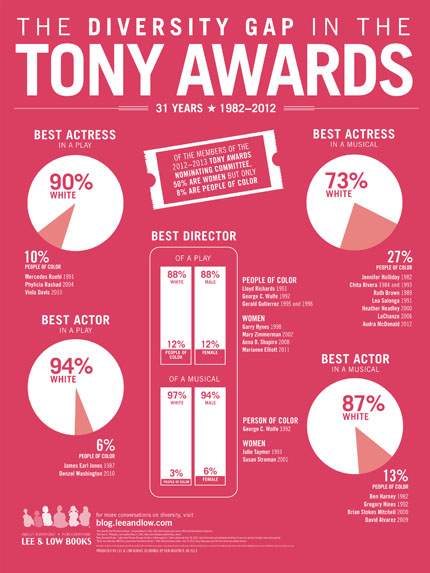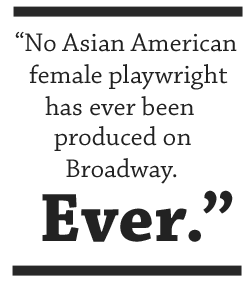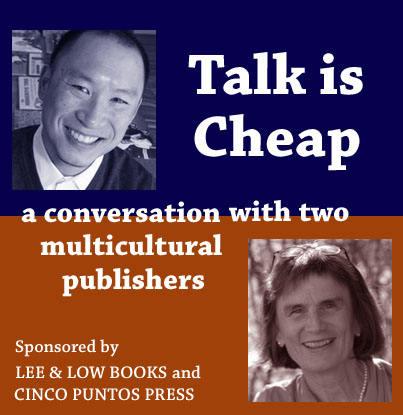Summer is in full swing and that means lots of exciting trips to be planned! We’ve pinned a list of picture books about travel on our new Pinterest board, so you can travel the world without spending money or suffering from jetlag!
Close Reading + Visual Literacy=Pathways for Understanding

![]() Guest blogger Katie Cunningham is an Assistant Professor at Manhattanville College. Her teaching and scholarship centers around children’s literature, critical literacy, and supporting teachers to make their classrooms joyful and purposeful. Katie has presented at numerous national conferences and is the editor of The Language and Literacy Spectrum, New York Reading Association’s literacy journal.
Guest blogger Katie Cunningham is an Assistant Professor at Manhattanville College. Her teaching and scholarship centers around children’s literature, critical literacy, and supporting teachers to make their classrooms joyful and purposeful. Katie has presented at numerous national conferences and is the editor of The Language and Literacy Spectrum, New York Reading Association’s literacy journal.
John Berger, in his famous documentary and book Ways of Seeing, explained that “Seeing comes before words. The child looks and recognizes before it can speak.” Visual literacies are, perhaps, the primary and first ways young children understand the world. Young children are not only visual readers of the world they are naturally close readers as well. They closely read people’s facial expressions. They read signs to orient themselves. They read new blades of grass, flakes of snow, and changes in leaves as signs of seasonal change. For young children, close reading and visual literacies are their pathways for understanding. Yet our capacities to closely read what we see should be valued and strengthened beyond early childhood.
Society certainly thinks so. Instagram now has more than 100 million active users per month and is increasingly being taken up by teens and tweens as their site of choice over Facebook. Pinterest has more than 48.7 million users. Staggeringly, more than one billion unique users visit You Tube each month. Businesses today certainly recognize the power of visually-driven social media outlets as the primary way to reach potential clients. Yet too often the skill of closely reading what we experience visually is devalued in school over traditional print-based text. Are the Common Core State Standards (CCSS) repositioning the power of the visual as part of the definition of what it means to be an attentive reader today? One hopes so.
Happy Summer Solstice!

ALA 2013 Signing Schedule (and giveaways!)
Will you be at ALA 2013 this year in Chicago? If so, we’d love to meet you! We’ll be in booth #2305. Here’s what’s happening:
ARC Giveaways!
Killer of Enemies, by Joseph Bruchac (fall 2013)
Bruchac’s newest YA novel retells the story of Lozen, the monster slayer of Apache legend, with a post-apocalyptic steampunk twist.
The Monster in the Mudball, by Susan Gates (fall 2013)
In this middle grade fantasy/mystery, Jin accidentally awakens a monster and must team up with the Chief Inspector of Ancient Artifacts to save his baby brother and, perhaps, the world.
Why Hasn’t the Number of Multicultural Books Increased In Eighteen Years?
Note: This post was originally posted in June 2013. An updated study with new statistics can be found here. The infographic below has also been updated.
Since LEE & LOW BOOKS was founded in 1991 we have monitored the number of multicultural children’s books published each year through the Cooperative Children’s Book Center’s statistics. Our hope has always been that with all of our efforts and dedication to publishing multicultural books for more than twenty years, we must have made a difference. Surprisingly, the needle has not moved. Despite census data that shows 37% of the US population consists of people of color, children’s book publishing has not kept pace. We asked academics, authors, librarians, educators, and reviewers if they could put their fingers on the reason why the number of diverse books has not increased. Continue reading
friday feast: are your tomatoes laughing?
Love this review of LAUGHING TOMATOES, which definitely puts me in the mood for summer!
ALA Book Buzz: A Conversation with Two Multicultural Publishers
If you’ll be at ALA in Chicago this year, please join Lee & Low Books and Cinco Puntos Press for a special ALA Book Buzz session on Monday morning:
New Voices Award Winners: “How I Started Writing”
 This year marks our 14th annual New Voices Award writing contest. Every year, LEE & LOW BOOKS gives the New Voices Award to a debut author of color
This year marks our 14th annual New Voices Award writing contest. Every year, LEE & LOW BOOKS gives the New Voices Award to a debut author of color ![]() for a picture book manuscript.
for a picture book manuscript.
Did you know that last year, children’s books written by authors of color made up less than seven percent of the total number of books published? As a multicultural publisher, we’re dedicated to increasing those numbers. The New Voices Award is one way we can help new authors of color break into publishing.
In this new blog series, we thought it’d be fun to bring together some past New Voices Award winners on the blog to see how they got their start as authors, what inspires them, and where they are now.
Q: How did you start writing picture books?
 Linda Boyden, The Blue Roses
Linda Boyden, The Blue Roses
Where’s the Diversity? The Tony Awards Looks in the Mirror
Though we are a publisher of children’s books, part of our mission is to look at diversity issues with a critical eye and see whose stories are not being told. As part of that mission, over the next several months we will be looking at several different arenas and talking to experts to see if patterns of inequality repeat themselves in different places. We hope our research will cast a light on the challenges – and opportunities – facing women and people of color today.

Since the Tony Awards will be presented on June 9, 2013, we decided to collect some data to see if a diversity gap exists in the theater. See our infographic above. While we cannot claim expertise in other fields outside of children’s books, we were fortunate to receive valuable insight from playwright/actor Christine Toy Johnson, who has spent the last fifteen years conducting dialogue with the entertainment industry to increase diversity in the theater and beyond.
 CHRISTINE TOY JOHNSON is an award-winning writer, actor, filmmaker, and advocate for inclusion. Member: BMI Workshop, Dramatists Guild, ASCAP, AEA, SAG-AFTRA, Asian
CHRISTINE TOY JOHNSON is an award-winning writer, actor, filmmaker, and advocate for inclusion. Member: BMI Workshop, Dramatists Guild, ASCAP, AEA, SAG-AFTRA, Asian ![]() American Composers and Lyricists Project (founder), executive board of Alliance for Inclusion in the Arts, elected leadership of Actors’ Equity Association (and co-chair of the union’s EEOC), founding steering committee member of AAPAC. {Read more}
American Composers and Lyricists Project (founder), executive board of Alliance for Inclusion in the Arts, elected leadership of Actors’ Equity Association (and co-chair of the union’s EEOC), founding steering committee member of AAPAC. {Read more}
How old were you when you knew you wanted to perform onstage?
I can’t remember an age when I didn’t want to perform onstage. I was the kind of kid who made my parents’ holiday guests watch my dramatization of “The Twelve Days of Christmas” every year. I started working professionally (and joined Actors’ Equity Association) the summer I graduated from high school, and against all odds, I have made my living in the arts ever since, as both an actor and a writer.
Since you have been involved in the theater for so long, how have you seen the theater world change? Do you feel that the number of roles available to people of color has increased over the years?
Things have gotten better for people of color, for sure, but there is obviously a lot of room for improvement.
I want to preface all of this by saying that I can only really speak from the perspective of being an Asian American actor and writer. I can’t presume to know what it’s like to be African American, Latina, Native American, etc., but the stats I’ve included from AAPAC (see below) will be able to address this question from a more objective point of view.
Back in 1991, I got a chance to play Julie Jordan in a production of CAROUSEL at the Hangar Theatre in Ithaca,  New York, which was a watershed moment for me. Not only was I shocked that I was being given the opportunity to audition (back then, a rare occurrence), but after I booked the job, working with a director and company of actors that supported me and believed in my ability to transform into a non-Asian character in a classic golden age musical gave me the confidence to go for and go on to play many, many more classic non-Asian leading lady roles. The power of encouragement and affirmation from your peers cannot be underestimated.
New York, which was a watershed moment for me. Not only was I shocked that I was being given the opportunity to audition (back then, a rare occurrence), but after I booked the job, working with a director and company of actors that supported me and believed in my ability to transform into a non-Asian character in a classic golden age musical gave me the confidence to go for and go on to play many, many more classic non-Asian leading lady roles. The power of encouragement and affirmation from your peers cannot be underestimated.
As a playwright/librettist/lyricist, I am also acutely aware of the number of writers of color that are being produced, which is a key part of this puzzle. (More on that in a later question.) Personally, I am conscious of always either including an Asian American actor in my written work or telling an aspect of an Asian American character’s story. I believe that the only way we’ll see our roles increase is if more of our stories are produced (written by and/or about us), and/or if more playwrights/directors/producers are open to having people of color play non-race specific roles they write/direct/produce.
Using Children’s Books to Teach About Love and Belonging
 Guest blogger Katie Cunningham is an Assistant Professor at Manhattanville College. Her teaching and scholarship centers around children’s literature, critical
Guest blogger Katie Cunningham is an Assistant Professor at Manhattanville College. Her teaching and scholarship centers around children’s literature, critical ![]() literacy, and supporting teachers to make their classrooms joyful and purposeful. Katie has presented at numerous national conferences and is the editor of The Language and Literacy Spectrum, New York Reading Association’s literacy journal.
literacy, and supporting teachers to make their classrooms joyful and purposeful. Katie has presented at numerous national conferences and is the editor of The Language and Literacy Spectrum, New York Reading Association’s literacy journal.
We know love when we see it. The best mornings I have as a parent are when I see love between my sons. Moments like when my one-and-a-half year old spontaneously hugs my four year old, and he hugs him back. The best mornings I had as a teacher were when I saw love between my students. When a second grader high-fives a classmate for taking a risk with a math problem or when a student sits by someone at lunch who looks alone. As a parent and an educator, I am always on the look out for stories that center love in ways that enable young children to immediately but deeply understand what love is.



